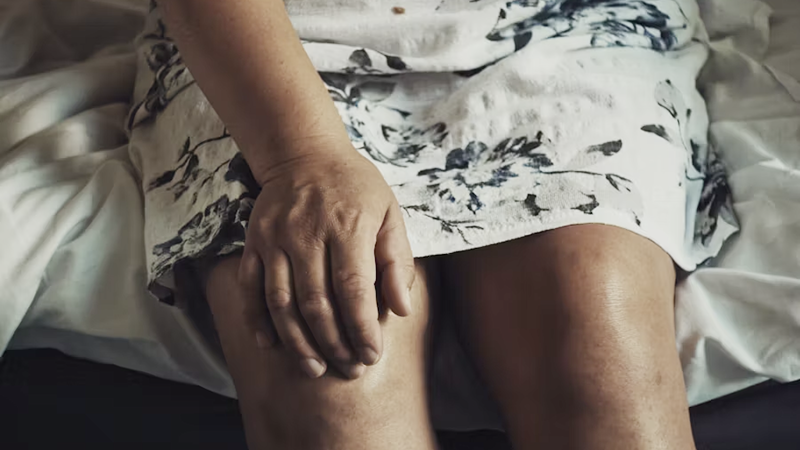
DISC Health Equity Action Lab


Osteoarthritis (OA) is a common condition that affects millions of people worldwide, particularly as they age. Characterized by the breakdown of cartilage in the joints, OA can lead to pain, stiffness, and reduced mobility. While there is no cure for OA, there are numerous treatment options available to help manage symptoms, improve quality of life, and maintain daily functionality. Let’s explore the various approaches to relieving knee pain caused by osteoarthritis.
The Goals of Osteoarthritis Treatment
The primary objectives of OA treatment are to:
Relieve pain and stiffness
Maintain or improve mobility
Enhance overall quality of life
Achieving these goals often requires a combination of lifestyle changes, medications, physical therapy, and, in some cases, surgical interventions.
Physical Therapy and Exercise: The Cornerstone of OA Management
Regular physical activity is one of the most effective ways to manage OA symptoms. Exercise helps to:
- Strengthen the muscles around the joint
- Improve flexibility and range of motion
- Reduce stiffness and pain
- Support weight loss, which can alleviate joint pressure
Low-impact activities such as walking, swimming, biking, yoga, and water aerobics are particularly beneficial. If pain or stiffness makes exercise challenging, working with a physical therapist can help you develop a customized plan that suits your needs and limitations.
Weight Loss: A Gift to Your Joints
For individuals who are overweight or obese, shedding extra pounds can significantly reduce the strain on weight-bearing joints like the knees. Research shows that losing just one pound can relieve four pounds of pressure on the knees. Even modest weight loss can lead to noticeable improvements in pain, mobility, and overall joint health.
Medications: Easing the Pain
While no medication can reverse OA, several options can help manage pain and inflammation:
Acetaminophen (Tylenol): Effective for mild to moderate pain.
Nonsteroidal Anti-Inflammatory Drugs (NSAIDs): Over-the-counter options like ibuprofen and naproxen can reduce pain and inflammation. Prescription-strength NSAIDs may be recommended for more severe symptoms.
Duloxetine (Cymbalta): Originally developed as an antidepressant, this medication is also approved for chronic pain management.
Tramadol (Ultram): A prescription opioid for severe pain, though it carries a risk of addiction and is used cautiously.
For localized relief, topical treatments such as capsaicin creams, salicylates, and diclofenac gels can be applied directly to the affected joint. Injections, including corticosteroids and hyaluronic acid, may also provide temporary relief for more advanced cases.
Beyond Medications: Alternative Therapies
In addition to medications, several non-invasive therapies can help alleviate OA pain:
Hot and Cold Therapy: Heat can ease stiffness, while cold packs reduce swelling and pain.
Acupuncture: This ancient practice has shown promise in reducing OA-related pain.
Massage Therapy: Gentle kneading of muscles and joints can improve circulation, reduce pain, and promote relaxation.
Braces and Orthotics: These devices can help redistribute weight and reduce pressure on the affected joint.
Lifestyle Changes for Long-Term Relief
Adopting a healthy lifestyle can make a significant difference in managing OA symptoms:
Quit Smoking: Smoking can worsen cartilage loss and delay healing after joint surgery.
Eat a Balanced Diet: A diet rich in fruits, vegetables, fish, and healthy fats supports overall health and can aid in weight management.
Seek Emotional Support: Chronic pain can take a toll on mental health. Consider counseling, support groups, or relaxation techniques like deep breathing and guided imagery.
Use Assistive Devices: Tools like grabbers, jar openers, and ergonomic furniture can make daily tasks easier and reduce strain on joints.
When Surgery Becomes Necessary
If conservative treatments fail to provide relief, surgical options such as knee or hip replacements may be considered. These procedures can significantly reduce pain and restore mobility, allowing individuals to return to their daily activities with greater ease.
The Bottom Line
Managing knee pain caused by osteoarthritis requires a multifaceted approach. By combining physical activity, weight management, medications, and healthy lifestyle changes, you can take control of your symptoms and improve your quality of life. Always work closely with your healthcare provider to develop a treatment plan tailored to your specific needs. With the right strategies in place, living well with osteoarthritis is entirely possible.

For more information, local support, and valuable resources, we encourage you to connect with the Arthritis Foundation in St. Louis. Their team is dedicated to empowering people with arthritis to live their best lives. Reaching out for support is a powerful step toward taking control of your health.
Delores A. Hardwick, MBA
Arthritis Foundation Executive Director – (Eastern MO & Southern IL)
O: 314.896.4776
dhardwick@arthritis.org
About
DISC Health
The Health Equity Action Lab (HEAL) is an initiative by Dynasty Interactive Screen Community aimed at addressing health disparities in the U.S. and globally. By engaging media and stakeholders, HEAL seeks to reduce health inequalities and raise awareness. Their approach includes overcoming socio historical barriers and confronting the institutional, social, and political factors that perpetuate healthcare inequality.
Howard University Hospital (HUH)
Howard University Hospital, established in 1862 as Freedmen’s Hospital, has a rich history of serving African Americans and training top medical professionals. Located in Washington, D.C., it is the only teaching hospital on the campus of a historically Black university. HUH is a Level 1 Trauma Center and a critical healthcare provider for underserved populations. It offers advanced medical services, including robotic surgery, and has received numerous accolades for excellence in specialties like heart care, stroke treatment, and radiology.
Learn more about Howard University Hospital (HUH)
Howard University Faculty Practice Plan (FPP)
The Howard University Faculty Practice Plan is a multi-specialty physician group in Washington, D.C., dedicated to advancing healthcare and eliminating health disparities. It offers comprehensive services, including primary and specialty care, mental health, imaging, and cancer care, all connected to Howard University Hospital. FPP emphasizes patient-centered, respectful care for the diverse community and provides free health screenings and events to promote wellness.
Learn more about Howard University Faculty Practice Plan (FPP)
#KneePainRelief #OsteoarthritisTreatment #JointHealth

